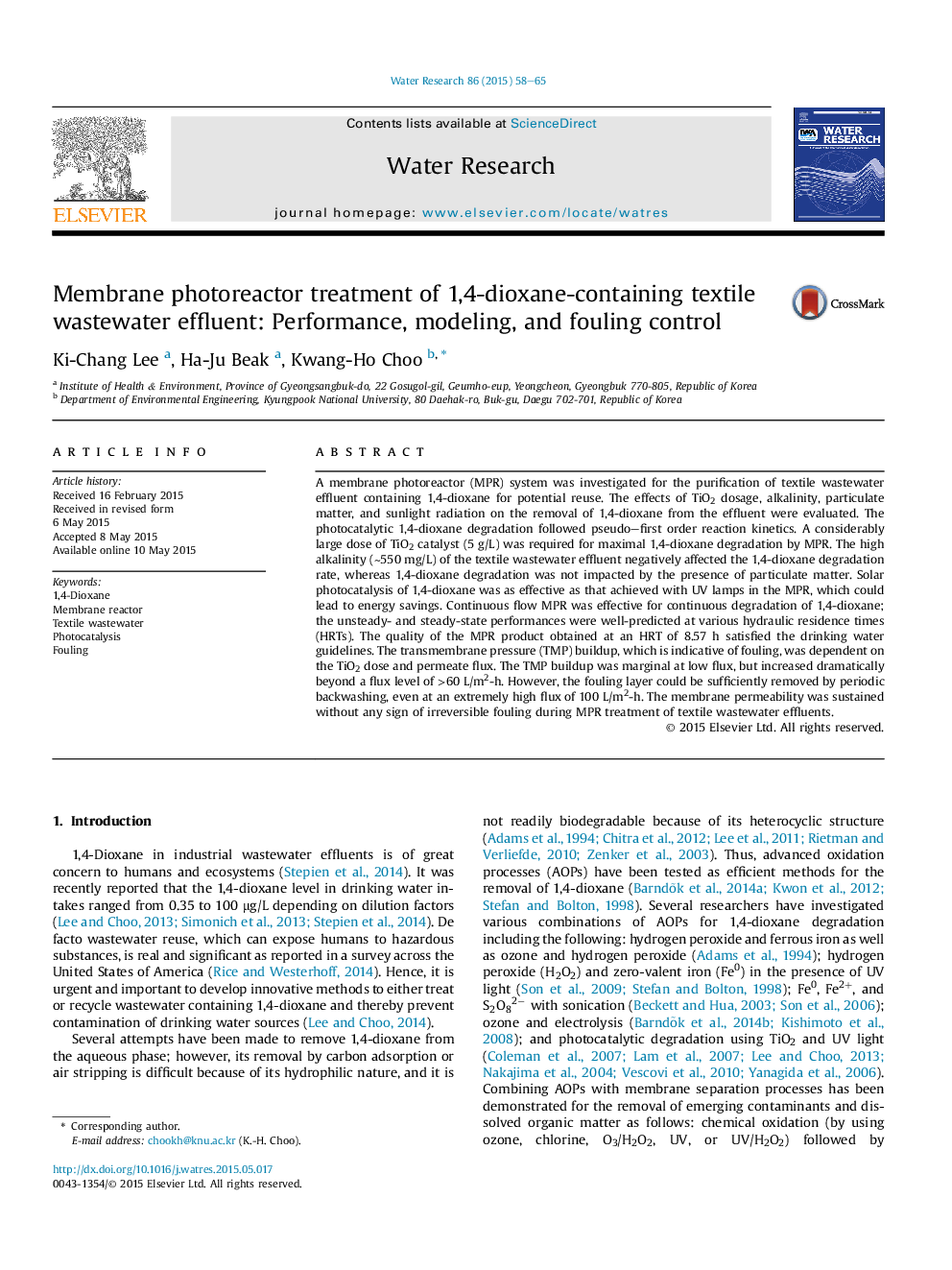| کد مقاله | کد نشریه | سال انتشار | مقاله انگلیسی | نسخه تمام متن |
|---|---|---|---|---|
| 6365637 | 1623082 | 2015 | 8 صفحه PDF | دانلود رایگان |
- A membrane photoreactor was utilized for textile wastewater effluent treatment.
- 1,4-Dioxane degradation depended highly on the TiO2 dose and alkalinity, but not on colloids.
- Solar photocatalysis of 1,4-dioxane was as effective as that achieved by UV radiation.
- Model predictions for 1,4-dioxane removal agreed well with experimental observations.
- Periodic backwashing reversed membrane fouling caused by TiO2 deposition.
A membrane photoreactor (MPR) system was investigated for the purification of textile wastewater effluent containing 1,4-dioxane for potential reuse. The effects of TiO2 dosage, alkalinity, particulate matter, and sunlight radiation on the removal of 1,4-dioxane from the effluent were evaluated. The photocatalytic 1,4-dioxane degradation followed pseudo-first order reaction kinetics. A considerably large dose of TiO2 catalyst (5Â g/L) was required for maximal 1,4-dioxane degradation by MPR. The high alkalinity (â¼550Â mg/L) of the textile wastewater effluent negatively affected the 1,4-dioxane degradation rate, whereas 1,4-dioxane degradation was not impacted by the presence of particulate matter. Solar photocatalysis of 1,4-dioxane was as effective as that achieved with UV lamps in the MPR, which could lead to energy savings. Continuous flow MPR was effective for continuous degradation of 1,4-dioxane; the unsteady- and steady-state performances were well-predicted at various hydraulic residence times (HRTs). The quality of the MPR product obtained at an HRT of 8.57Â h satisfied the drinking water guidelines. The transmembrane pressure (TMP) buildup, which is indicative of fouling, was dependent on the TiO2 dose and permeate flux. The TMP buildup was marginal at low flux, but increased dramatically beyond a flux level of >60Â L/m2-h. However, the fouling layer could be sufficiently removed by periodic backwashing, even at an extremely high flux of 100Â L/m2-h. The membrane permeability was sustained without any sign of irreversible fouling during MPR treatment of textile wastewater effluents.
396
Journal: Water Research - Volume 86, 1 December 2015, Pages 58-65
